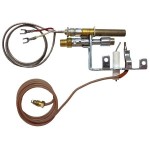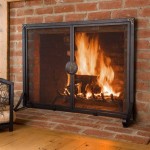Pot Belly Fireplaces: A Comprehensive Guide
Pot belly fireplaces, also known as pot-bellied stoves or wood-burning stoves, are a popular choice for home heating and aesthetic appeal. They are characterized by their round, pot-like shape, often featuring a decorative design and a spacious firebox. While these fireplaces offer a range of advantages, it is crucial to understand their functionality, installation, and maintenance to ensure safe and efficient operation.
Functionality and History
Pot belly fireplaces are known for their ability to generate significant heat, particularly in smaller spaces. They typically burn wood, although some modern models can accommodate other fuels like pellets or gas. The design of the firebox promotes efficient combustion, maximizing heat output and reducing smoke and ash.
The history of pot belly fireplaces traces back to the 18th century, where they were commonly used in homes and businesses. In the early days, these stoves were essential for cooking, heating, and even providing light. As technology advanced, pot belly fireplaces continued to evolve, with improvements in materials, design, and safety features.
Installation and Safety Considerations
Installing a pot belly fireplace requires careful planning and adherence to safety guidelines. First, it is essential to choose a suitable location, ensuring adequate clearance from flammable materials and proper ventilation. The fireplace should be installed on a non-combustible surface, such as a concrete slab or a fireplace hearth.
To ensure safety, it is crucial to have the fireplace installed by a qualified professional. They will ensure that the flue is properly installed and connected to the chimney, preventing smoke and carbon monoxide buildup. Regular inspections and maintenance are also vital for continued safe operation.
Advantages and Disadvantages
Pot belly fireplaces offer numerous advantages, including their aesthetic appeal, heating efficiency, and cost-effectiveness. They can create a cozy atmosphere, adding warmth and character to any room. Their ability to burn wood, a readily available and renewable fuel, further enhances their affordability.
However, there are also some drawbacks to consider. Pot belly fireplaces require regular cleaning to prevent soot and ash buildup. They can also create a certain amount of noise, particularly during operation. Furthermore, their placement may be restricted due to clearance and ventilation requirements.

What Happened To Potbelly Stoves Evolution Of The Modern Stove

Pot Belly Stoves The Stove Co

Masport Klondike Pot Belly Premium Fireplaces Heaters Flues And Fires Melbourne

The Pot Belly Stove Co Specialists In Wood Gas And Ducted Heating Log Fires Bbq S Air Conditioning

Pot Belly Fire Pit Oz Box

12 Pot Belly Fireplace Ideas Design Wood Burner

Wood Stove Designs Quality Heat Modern Stoves

Pot Belly Wood Burning Stoves Modern Vs Antique

Klondike Potbelly Stove Classic Fireplaces Bbqs

Sarsden Cast Iron Pot Belly Wood Heater Bare Outdoors
Related Posts








